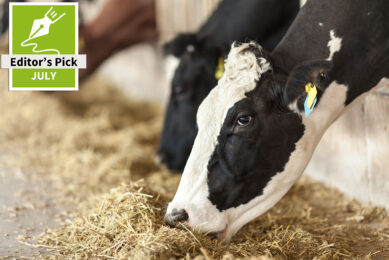Old additive technology still beneficial in feedlots
A scientific review in Australia has shed more light on the issue of feed conversion efficiency in feedlots, sure to hearten many in the sector as demand both globally and domestically for feed grain continues to intensify, reports The Land.
The study of 11 large-pen studies has found the inclusion of an industry-standard feed additive, Rumensin, at maximum inclusion rates can significantly improve profitability by reducing dry matter intake while maintaining average daily gain.
Rumensin (Elanco) is an ionophore, which can be classified as an antibiotic, that is produced naturally by the bacteria strain (Strep cinnamonensis) and is typically fed as the sodium salt.
In effect, it increases the production of propionic acid, the most efficient of the volatile fatty acids needed for growth. The product is also registered for the control of bloat and as an aid in the prevention of coccidiosis.
Old technology
Elanco technical consultant, Dr Judson Vasconcelos, says the study provides a fresh look at what is considered to be ‘old’ technology.
"Rumensin has been used to improve the health and performance of feedlot cattle for more than 35 years," he said.
"As a result, many managers probably never give inclusion rates a second thought. However, some may not be aware that the effect of Rumensin on feedlot performance varies according to how much you actually use.
"In general, lower inclusion rates will produce maximum response in average daily gain, while inclusion at higher rates will produce maximum response in feed conversion efficiency.
US study
"This study confirms that Rumensin continues to be one of the most cost-effective inputs in lot feeding.
In a process known as ‘meta-analysis’, US researchers examined the effect of Rumensin on feedlot performance when added at 30 ppm and 40 ppm.
Meta-analysis summarises the findings of a large number of research trials in a scientifically accurate and statistically valid way.
The researchers reviewed 11 large-scale studies involving more than 11,000 head and feeding periods ranging from 151 to 370 days.
The study found the inclusion of Rumensin at 40 ppm improved feed conversion by 0.05 points and reduced dry matter intake by 15.9 kilograms compared with an inclusion rate of 30 ppm.
This response was consistent across all cattle types and rations.
Dr Vasconcelos, who attended the Australian Lot Feeders Association Beefworks conference in Toowoomba last year, said the findings have important implications for Australian lot feeders.
"Most Australian feedlots include Rumensin at 20 to 25 ppm, which is about mid-range on the registered label directions in this country,” he said.
"Although the maximum inclusion rate in Australia is 33 ppm, there is still opportunity to maximise profitability by increasing the dosage rate.
"For example, US figures show you’d be $5.33 a head better off by using the higher rate even after the extra cost of the ionophore.
Dr Vasconcelos is a former assistant professor in feedlot management and nutrition at the University of Nebraska and research associate at Texas Tech University.











